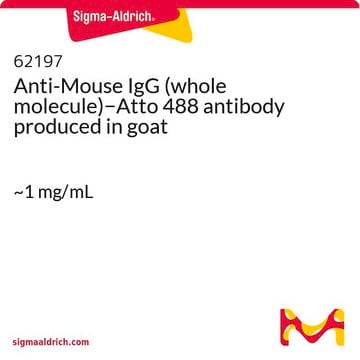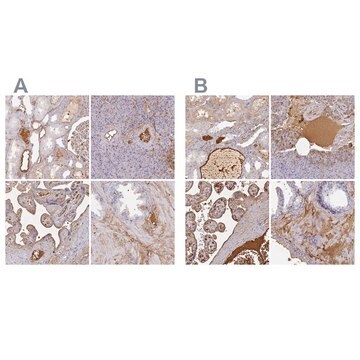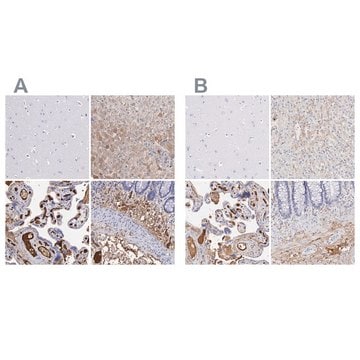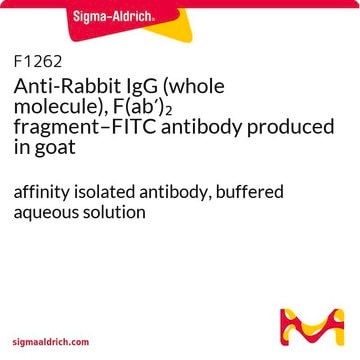18772
Anti-Rabbit IgG - Atto 488 antibody produced in goat
whole molecule, 1 mg/mL protein
Synonym(s):
Atto 488-[goat-Anti-rabbit IgG], whole molecule
About This Item
Recommended Products
conjugate
Atto 488 conjugate
antibody form
affinity isolated antibody
antibody product type
secondary antibodies
clone
polyclonal
contains
50% glycerol
species reactivity
rabbit
concentration
1 mg/mL protein
technique(s)
immunocytochemistry: 1:500
immunofluorescence: 1:200
immunohistochemistry: suitable
fluorescence
λex 485 nm; λem 552 nm in PBS
shipped in
wet ice
storage temp.
−20°C
target post-translational modification
unmodified
General description
Atto 488 is a labeling dye with high molecular absorption (90,000) and quantum yield (0.80) as well as sufficient Stokes shift between excitation and emission maximum. It is optimized for excitation with an argon laser, and is characterized by high photostability. Atto fluorescent labels are designed for high sensitivity applications, including single molecule detection. Atto labels have rigid structures that do not show any cis-trans-isomerization. Thus these labels display exceptional intensity with minimal spectral shift on conjugation.
Immunogen
Application
Physical form
Analysis Note
Legal Information
Disclaimer
Not finding the right product?
Try our Product Selector Tool.
Storage Class Code
10 - Combustible liquids
WGK
WGK 3
Flash Point(F)
Not applicable
Flash Point(C)
Not applicable
Certificates of Analysis (COA)
Search for Certificates of Analysis (COA) by entering the products Lot/Batch Number. Lot and Batch Numbers can be found on a product’s label following the words ‘Lot’ or ‘Batch’.
Already Own This Product?
Find documentation for the products that you have recently purchased in the Document Library.
Customers Also Viewed
Articles
Immunoblotting (Western blot transfer) is a common technique in modern proteomics research.
Our team of scientists has experience in all areas of research including Life Science, Material Science, Chemical Synthesis, Chromatography, Analytical and many others.
Contact Technical Service









